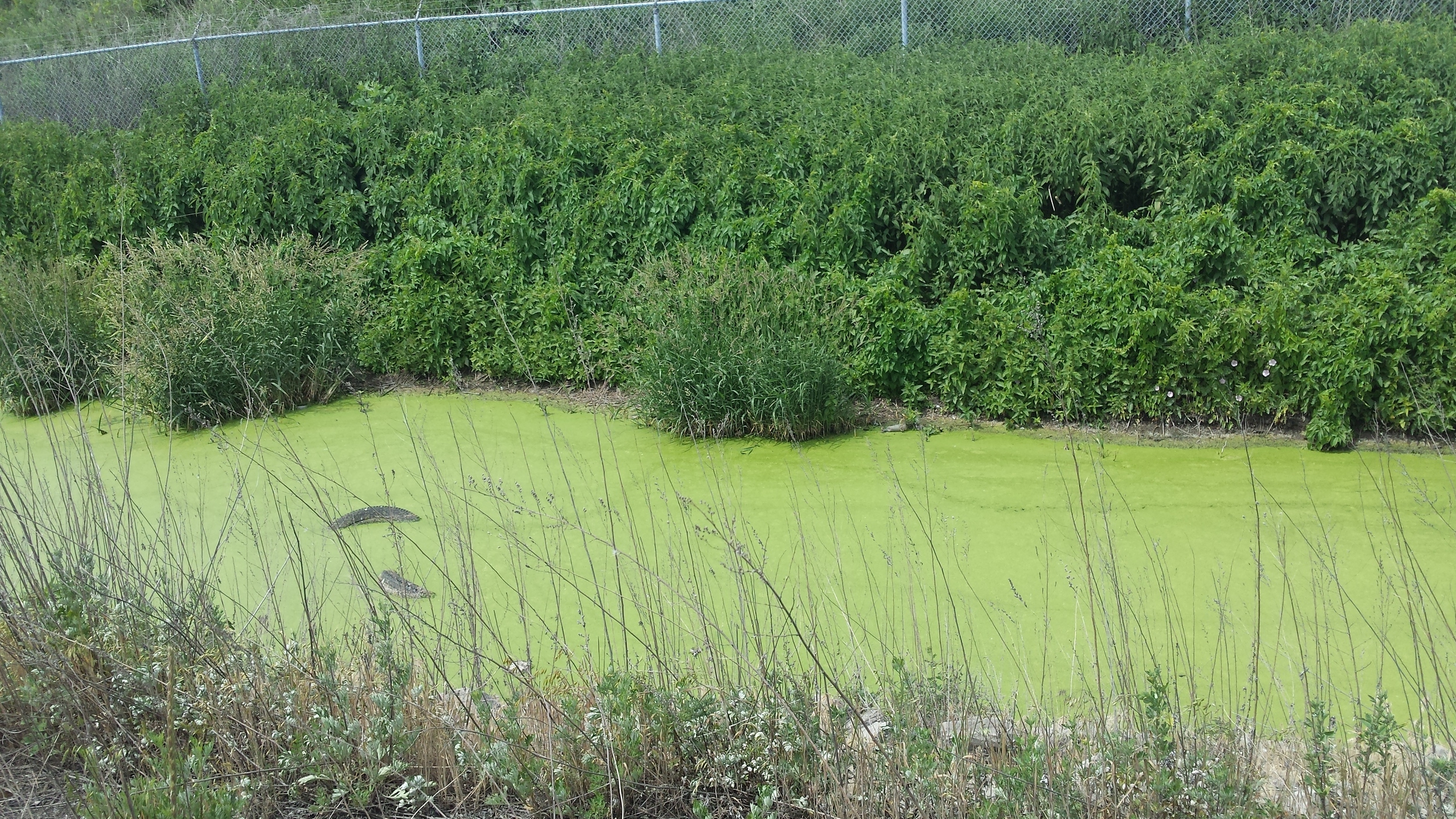It was an early morning on the shores of Hamilton Harbour. A group of about 30 Indigenous and non-Indigenous allies gathered with a collective purpose. It was one based in love for the water, and somewhere deep inside, a dignified rage that fuelled our motivation to walk 42 kilometres in three days.
Two women from Hamilton approached me at the beginning of the year. “We have to do something,” they said. They were talking about the continued degradation of the water in Hamilton Harbour. The International Joint Commission (IJC) listed Hamilton Harbour as an Area of Concern in 1987. According to the International Joint Commission, an area of concern is a, “geographic area where human activity has caused, or are likely to cause impairment of beneficial uses of the area’s ability to support aquatic life, (1999).
Considering that 46% of the 45 kilometre shoreline is used for industrial purposes, (Bay Area Restoration Council, 2012), it’s easy to see how the water systems have become so denigrated. Randle Reef is located just west of US Steel and lies within the water of Hamilton Harbour. It has been deemed the “worst coal tar contaminated site in Canada,” (Hamilton Spectator, 2014). The International Joint Commission has scheduled Remedial Action Plans to help get Hamilton Harbour delisted, however, in the past, escalating costs has created barriers towards any implementation of these plans.
We decided to do what we do best. That is to walk in the footsteps of our ancestors. As Indigenous women, we carry a specific responsibility to protect and honour the water. These are responsibilities that have been handed down intergenerationally through Rites of Passage ceremonies and our abilities as lifegivers. With these responsibilities in mind, we organized the Hamilton Harbour Water Walk on the Dish with One Spoon territory.
Hamilton is located on territory that has been historically shared between Anishnaabe and Haudenosaunee peoples. The agreement to share the territory was memorialized through the Dish with One Spoon wampum. The significance of the wampum is to illustrate our dependence on the land and water. The “dish” represents the land, the water and the abundance sustained by these life giving forces. The “spoon” is representative of our human activity, it is to remind us to be mindful of the ways in which we co-exist with the land, the water and all of creation.
From June 15 to June 17, 2016, we embarked on a Water Walk, meaning that we would be praying for the water with our traditional medicines, our songs and our sacrifice. With support from community members in Hamilton and Six Nations, we were able to organize a fundraiser with musical talent being graciously donated by artists like Logan Staats, Piper Hayes, Sarah Beatty and Kahsenniyo. Because of this effort, we were able to raise $540, which covered nearly all associated costs!
Following in the steps of Anishnaabe grandmothers, like Josephine Mandamin and Judy DaSilva, we began our walk with songs and prayers. We were joined by all kinds of people. It was a heart opening experience to see how many kinds of people genuinely cared for the well being of the water. Young girls and young men began the walk, carrying the copper pot full of water as well as a water staff made by men from Oneida.
Leaving Bayfront Park, we began to walk eastward towards Hamilton’s industrial sector. The early morning start gave us incredible views of the sun rising over the Harbour. We were all kind of quiet as we started out. Bursts of laughter rang out every once in awhile, reminding us of our humanity and our ability to survive. Tobacco left our fingertips at every point that we seen or crossed the water. Soon enough, our views were blocked by monstrous industries spewing smoke. We were unable to see the water for many kilometres. We took a wrong turn, hoping to get closer to the water, and we ended up walking towards a fenced in property that let us know guard dogs were on duty. Shortly afterwards, Hamilton Port Authority became very interested in what we were doing and began to follow us and ask us what we were “protesting”.
A really great part of our Water Walk was the Sacred Fire that was burning the entirety of the three-day journey. Our firekeepers did a great job in helping to take care of our spirit and energy during this time. The first day, the fire burned at Bayfront Park. Many visitors came to sit at the fire to learn about what we were doing. The fire travelled around the Bay with us which was a really significant part of Hamilton Harbour Water Walk (Dish with One Spoon territory). The first evening of the walk, the fire came to join us at the first resting spot located on the shoreline of Lake Ontario.
The second day, we crossed the channel that separates the Harbour from Lake Ontario. With the copper pot and staff, we walked over a lift bridge that was created to make traffic on the water more accessible to the steel industry. During the late 1800’s the channel was dredged, which unsettled natural and unnatural sediments, to allow for transportation of products needed for, and created by, industrial activity on the shorelines of Hamilton Harbour.
From there, we began to lose sight of the water once again. Upscale neighborhoods and ritzy golf clubs stood in our way this time. Walking through Burlington, on the north side of the Harbour, was nearly as frustrating as the first day because it was really difficult to be able to focus on prayers for the water. We could see the water from behind gates but somehow I think this separation made the connection stronger because when we did get to offer tobacco, often it had been in our hands for a long time.
The second evening, we came to rest on the north shoreline of Hamilton Harbour. Our fire was carried from the shorelines of Lake Ontario to rest a second evening on the northern shoreline of Hamilton Harbour. Leaving from our final resting point the next day, it set in that we were nearly done. People in neighborhoods asked us why we were walking and when we told them, they encouraged our efforts. Cars passing by our small group of Water Walkers would honk their horns in support as we carried our copper pot and water staff. Everyone got to take turns carrying our sacred items during the walk. It was an inclusive and empowering experience.
Perhaps what made the Hamilton Harbour Water Walk most notable was the love and support from people. Many different kinds of people came together, all for the health and well being of our water. Many travelled from distances to participate, many friends spent all day cooking on Friday so that the Water Walkers could be welcomed back with a feast. Other Water Walkers joined us, many good conversations were had and new friendships made.
Upon returning home and resting for awhile, I came across some interesting, (and good!) news. On Friday, June 17, the day that we finished our walk, Catherine McKenna, Federal Minister of Environment and Climate Change announced a $139 million investment into the implementation of one the Remedial Action Plans designed to get Hamilton Harbour “delisted” as an Area of Concern. This particular plan is designed to contain the “toxic blob” known as Randle Reef. The project will have three phases and aims to be completed by 2022.
First, they plan to build a box to contain the blob, which is about 695, 000 cubic metres of toxic contaminants, coal tar and heavy metals. Randle Reef is 60 hectares and will require a containment unit as big as First Ontario Centre, three times over! A “double steel walled barrier” will contain the most toxic sediment. They hope for this phase to be completed by the end of 2017. The final five years will be spent between implementing the next two phases including the dredging of surrounding sediment which will be placed inside the containment unit. The third and final phase involves having the water removed from the containment unit and then placing an impermeable cap on top of it to seal the contaminants. (Hamilton Spectator, 2016)
It's great news that one of the Remedial Action Plans are finally being implemented but I don’t think that our work to protect the water will ever be done. Certainly not as long as industry, resource extraction and environmental genocide continue to be more important to Canadian society than the health and well being of our water, the land, the ecosystems and people who live closest to these places. While there is still much work to be done, our small group of Water Walkers is going to continue raising awareness of the continued denigration of Hamilton Harbour. With the help of Great Lakes Commons, we will be working in collaboration with Reclaim Turtle Island to produce a short video journal highlighting more of our personal experiences while on the Hamilton Harbour Water Walk (Dish with One Spoon territory).
We are continually grateful for our families, our friends and community members and those who demonstrate love for the water through actively defending our waterways and our lives. It is our responsibility to remind everyone that water is life. Everyday is a good day to be mindful of the miracle of water and maybe give some thought to what we can each do to help protect the water, even if it means just being grateful for it’s life giving qualities every time we use this precious resource.
Kchi Miigwech Kina Weya
Kchi Miigwech Nibi






